Potřebujeme váš souhlas k využití jednotlivých dat, aby se vám mimo jiné mohly ukazovat informace týkající se vašich zájmů. Souhlas udělíte kliknutím na tlačítko „OK“.
ASTM E1413-13
Standard Practice for Separation of Ignitable Liquid Residues from Fire Debris Samples by Dynamic Headspace Concentration
Automaticky přeložený název:
Standardní praxe pro separaci zápalných kapalné zbytky z Pozůstatky po požáru vzorků Dynamic Headspace Koncentrace
NORMA vydána dne 15.8.2013
Informace o normě:
Označení normy: ASTM E1413-13
Poznámka: NEPLATNÁ
Datum vydání normy: 15.8.2013
Kód zboží: NS-41678
Počet stran: 4
Přibližná hmotnost: 12 g (0.03 liber)
Země: Americká technická norma
Kategorie: Technické normy ASTM
Kategorie - podobné normy:
Anotace textu normy ASTM E1413-13 :
Keywords:
activated charcoal, dynamic headspace concentration, elution, fire debris samples, forensic science, ignitable liquid residues, Tenax, thermal desorption, ICS Number Code 13.220.99 (Other standards related to fire protection)
Doplňující informace
| Significance and Use | ||||||||||||||||
|
4.1 This practice is useful for preparing extracts from fire debris for later analysis by gas chromatography-mass spectrometry (GC-MS), see Test Method E1618. 4.2 This is a very sensitive separation procedure, capable of isolating quantities smaller than 0.1 μL of ignitable liquid residue from a sample 4.2.1 Actual recovery will vary, depending on several factors, including adsorption temperature, container size, and competition from the sample matrix. 4.3 This is a potentially destructive technique. Portions of the sample subjected to this procedure may not be suitable for re-sampling. Therefore, a portion of the sample extract should be saved for potential future analysis. Consider using passive headspace concentration as described in Practice E1412. |
||||||||||||||||
| 1. Scope | ||||||||||||||||
|
1.1 This practice describes the procedure for separation of small quantities of ignitable liquid residues from fire debris samples using the method of dynamic headspace concentration. 1.2 Dynamic headspace concentration uses adsorption and subsequent solvent elution or thermal desorption. 1.3 Both positive and negative pressure systems for adsorption are described, as well as a thermal desorption system. 1.4 While this practice is suitable for successfully extracting ignitable liquid residues over the entire range of concentration, the headspace concentration methods are best used when a high level of sensitivity is required due to a very low concentration of ignitable liquid residues in the sample. 1.5 Alternate separation and concentration procedures are listed in Section 2. If archival of the extract is of importance, then this practice’s thermal desorption procedure, SPME (Practice E2154), and headspace (Practice E1388) sample separation techniques are not recommended unless a portion of the extract can be split and retained. In order to have an archivable extract, then this practice’s sample collection on charcoal, solvent extraction (Practice E1386), or passive headspace concentration (Practice E1412) is recommended. 1.6 This practice offers a set of instructions for performing one or more specific operations. This standard cannot replace knowledge, skill, or ability acquired through appropriate education, training, and experience and should be used in conjunction with sound professional judgment. 1.7 This standard does not purport to address all of the safety concerns, if any, associated with its use. It is the responsibility of the user of this standard to establish appropriate safety and health practices and determine the applicability of regulatory limitations prior to use. |
||||||||||||||||
| 2. Referenced Documents | ||||||||||||||||
|
Podobné normy:
Historická
1.7.2014
Historická
1.4.2012
Historická
1.5.2014
Historická
1.7.2013
Historická
1.7.2013
Historická
1.5.2013
Odebírejte informace o nově vydaných normách ZDARMA:
Chcete pravidelně odebírat informace o nově vycházejících normách z celého světa a to zcela zdarma?
Přihlašte se k odběru. Vše je velice jednoduché a absolutně ZDARMA.
Na výběr máte vydavatele z celého světa.


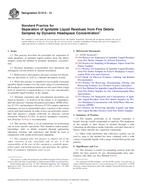
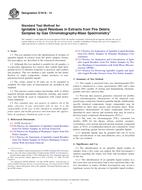 ASTM E1618-14
ASTM E1618-14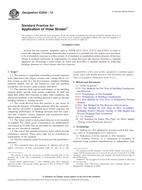 ASTM E2226-12
ASTM E2226-12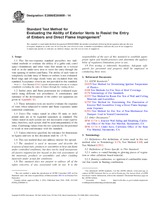 ASTM E2886/E2886M-14..
ASTM E2886/E2886M-14..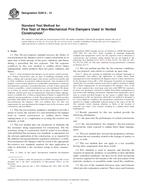 ASTM E2912-13
ASTM E2912-13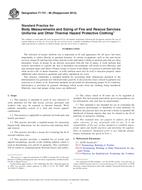 ASTM F1731-96(2013)..
ASTM F1731-96(2013)..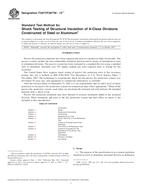 ASTM F2877/F2877M-13..
ASTM F2877/F2877M-13..
 Cookies
Cookies
